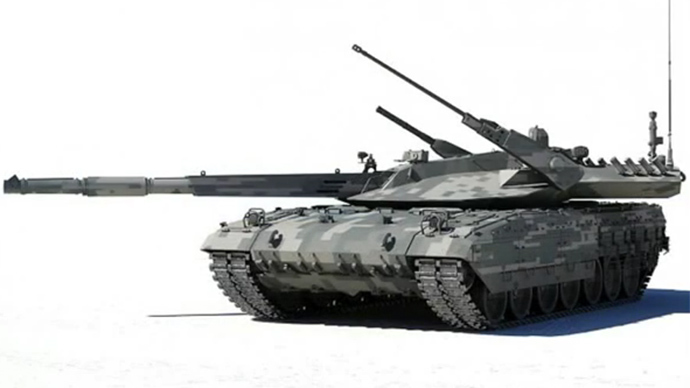


After five years of development, the Uralvagonzavod Research and Production Corporation has finalized manufacture of the first batch of Armata tanks and heavy personnel carriers. They have been included in Russia’s 2015 defense order, TASS said.
The new Armata armored tracked platform has reportedly combined and assimilated all the last decade’s major developments and innovations in battle vehicle design and construction.
The platform’s chief tank (T-14) sports an unmanned remotely controlled turret armed with a brand new 125 mm 2A82-1M smoothbore cannon. Its muzzle energy is greater than one of the world’s previously considered best cannons: the German Leopard-2 Rheinmetall 120 mm gun.
The 125 mm gun has 15-20 percent improved accuracy and its rolling fire angular dispersion has improved 1.7 times.
According to Russian media, the Armata tank might also come with a specially developed 152 mm gun, the most powerful ever cannon to be mounted on a main battle tank.
The tank’s turret will also carry a 30 mm sub-caliber ranging gun to deal with various targets, including low-flying aerial targets, such as attack planes and helicopters.
A 12.5 mm turret-mounted heavy machine gun is reportedly capable of taking out incoming projectiles, such as anti-tank missiles. It’s capable of neutralizing shells approaching at speeds of up to 3,000 meters per second.
The tank’s crew is securely enclosed in a multi-layer armored capsule separated from the ammunition container. The vehicle is fully computerized and only needs two servicemen to operate it. Each can also deploy the tank’s weapon systems.
The tank’s targeting is reportedly done with an active-phased array antenna and a large variety of other sensors.
The Armata platform allegedly has a fully mechanized electric transmission, powered by a 1,200 HP diesel engine. For greater efficiency, maintenance and repair schedules have been extended.
Within its blueprint, the Armata armored vehicle has the potential to evolve into a fully robotic battle vehicle.
According to preliminary estimates, 2,300 units are required for the Russian army.









Post a Comment Blogger Facebook Disqus
EmoticonClick to see the code!
To insert emoticon you must added at least one space before the code.